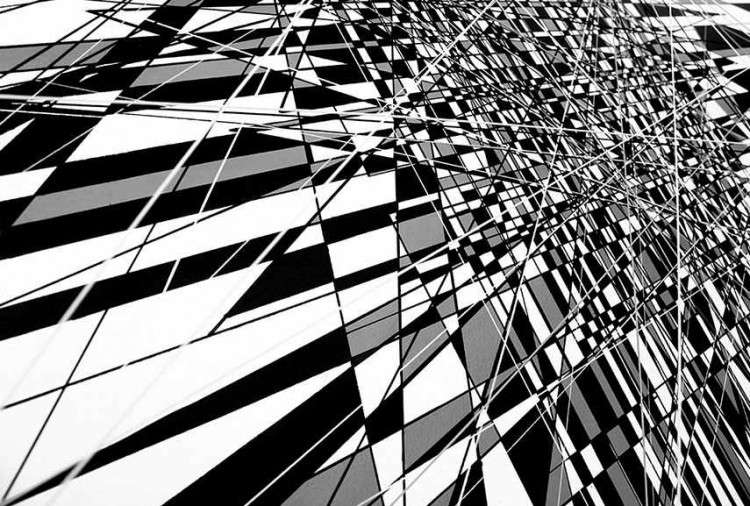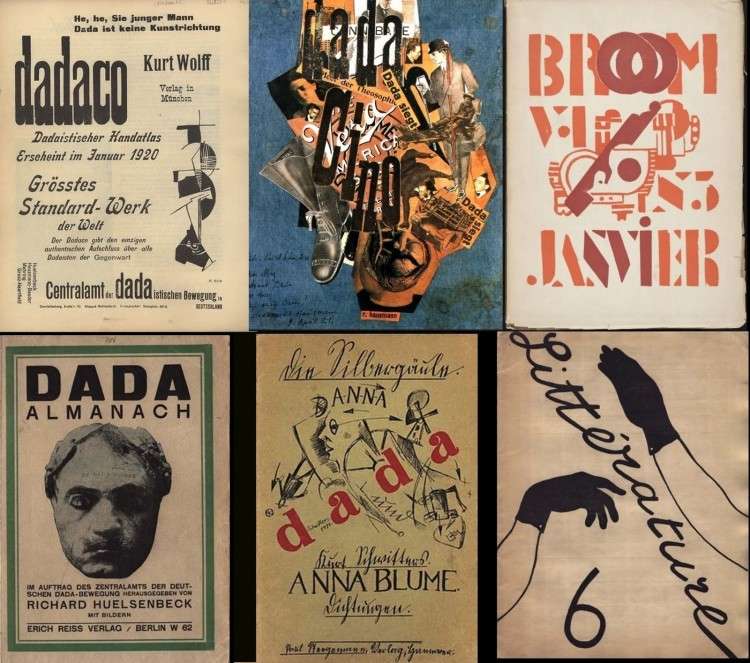14 Surprising Facts About The Modern Art Movements

14 SURPRISING FACTS ABOUT THE MODERN ART MOVEMENTS
Modern Art Movements : 1870 to 1940
Most people know three things about Modern Art Movements:
- “Modern art” is a broad term which refers to art produced during the years 1870-1970.
- “Modern art” witnessed many of the great international art movements, and also gave birth to entirely new forms of creative expression
- Impressionism is the first distinctly modern movement in painting.
However there are a lot of things about Modern Art Movements you probably didn’t know about.
WHAT IS UNIQUE ABOUT MODERN ART?
Here are 14 surprising facts you probably didn’t know about the major trends and movements in modern art, approximately dated to when they began, or when they gained prominence.
IMPRESSIONISM
Liquefying from the stress of fine finish and realistic renderings in academic art, French Impressionists painters sought new ways to portray expressions between light and movement, often using rich and bright colors. Allied to modern life, they often painted the city, but they also captured landscapes and scenes of middle-class leisure-taking in the environs.
Fact: By the beginning of the 1872, The name Impressionism had emerged as a core label of this style. “Impressionism” was derived from the tile of a Claude Monet painting: Impression, soleil levant ( Sunrise – Impression ).



LES NABIS
Came out in 1880s Paris, Les Nabis was a cult-like group of Post-Impressionist artists that wanted to let reality slip through the arts. This modern art movement was based on the philosophy and perspective of Paul Gauguin. Les Nabis had perfectly combined impressionist brushstrokes with vivid hues, mystical vs symbolic elements on a brightly patterned background. They audibly insisted on the flatness of the canvas and the enclosure of affecting and symbolic expressions which has been widely dominant on later modernist painting.
Fact: Les Nabis is a modern art movement which was considered to be on the cutting edge of modern art during their early period. Their subject matter was quite emblematic, but it was also oriented along the prototypes of Art Nouveau and the outlines of Japanese prints they so admired.



SYMBOLISM
Symbolism, is another art movement in the visual arts, it is often considered part of Post-Impressionism and as a reaction against Impressionism. This style is portrayed as a unfathomable emphasis on mystical and expressive subject matter. Symbolist artworks commonly assimilate icons and emotive motifs. These would later serve as significant influences on Expressionism.
Fact: This literary and artistic movement has been originated with a group of French poets in the late 19th century, which helped the movement extend as a visual art movement, influencing the European and American literatures of the 20th century to varying degrees.



POST IMPRESSIONISM
Post Impressionism was coined by the critic Roger Fry, as a revolutionary medium to illustrate the various reactions against Impressionism which began around 1886. The movement encompassed Symbolism and Neo-Impressionism before ceding to Fauvism around 1905. Post-Impressionists was a liquefaction of bright effects of light and atmosphere, in order to explore new avenues such as color theory and self expression.
Fact: Post-Impressionism is a representation of both an extension of Impressionism and a rejection of that style’s inherent limitations.
mos


ART NOUVEAU
During its brief period of influence, Art Nouveau went by several different names: Jugendstil, stile Liberty and Sezessionsstil. Art Nouvean has been a vast influence of style, and has endorsed a number of practitioners throughout Europe. Although it was just a decidedly modern take on decorative design. Simple floral patterns, curves and waves were the subject matter throughout, regardless of medium. The movement’s influence remains widely evident nowadays, surviving in definitive 20th-century architecture, furniture and jewelry design, and most notably in the paintings of Gustav Klimt.
Fact: Art Nouveau has emerged through the British art movement called the Arts and Crafts movement, which praised traditional craftsmanship over mass-produced elements of the industrial revolution.



FUTURISM
Futurism was a tribute-celebration to the advanced technology and urban modernity. Futurist artists wished to wipe out older structures of culture, and demonstrating instead the traits of modern life. The machine, speed, violence, time and change were their center of attention. Although there were some Futurist architects, most of its advocates were artists who worked in traditional media such as painting and sculpture, and in an eclectic range of styles inspired by Post-Impressionism.
Fact: Futurism is is a representation of embracing both popular and avant-garde mediums, and unlike many other modern art movements, Futurism was not immediately identified with a distinctive style.



FAUVISM
This movement in French painting began around 1898 but reached its peak and quickly dissolved around 1906. It was a concrete evolution of Post-Impressionism and Symbolism, the slackly affiliated group of artists developed a decorative, anti-naturalistic style as a way to express their feelings towards a subject. Formally, their work is characterized by vivid, often unmixed color, striking surface design and a very bold loom to execution.
Fact: Only Matisse continued to explore the possibilities and variations of Fauvism after 1908. Most of the other Fauves have decided to contribute to the development of new styles, such as cubism, which immediately followed the fauvist movement.



CUBISM
Scarcely visualized, the main hub of Cubism approach was a new way of describing (dimensions) space, volume and mass in art, and led to the development of important new graphic devices. More generally, Cubism pointed new paths towards abstract art, and suggested ways of describing the appearance and experience of life in the modern urban world.
Fact: The foundation of Cubism Movement was Picasso’s early work including “Les Demoiselles d’Avignon” and it gradually developed into the style we now recognize as cubism.



EXPRESSIONISM
Reacting against Impressionism, however influenced by Symbolism, the Expressionists have combined spiritual communication and sensation in their artwork. Drawn to primitivism and to modern life, they employed hazy imagery and a very rich color palette to convey their thoughtful emotions.
Fact: Expressionism was a cultural movement expressing emotionality in painting, literature, theatre, dance, film, architecture and music. However there has never been a distinct movement that called itself “expressionism”.



SUPREMATISM
Suprematism is a Russian abstract art movement.This movement has been one of the greatest brainchild of history and the exceptional brainchild of Kazimir Malevich. The movement has evolved out of the Russian Futurism and the ideas of avant-garde poets, and also literary critics of the early 1910s who were interested in the functioning of language and the nature of literature as an art.
Fact: Although this movement was generally expressed through painting, it often emphasized the texture of the paint as one of the fundamental, irreducible characteristics of the medium itself.



DADA
The Dada movement was launched in Zurich in 1916 and had quickly inspired analogous groups of New York, Berlin, Cologne, Paris and elsewhere. Its influence waned after the Paris group collapsed and ceded to Surrealism. Dada movement was inspired by revulsion at the carnage of WWI, the artistic and literary movement developed an anarchic opposition to nationalism, rationalism and all dominant bourgeois values.
Fact: All the various Dada groups was contrasting realism, embracing avant-garde shock strategies, but their tone differed; German Dada for example was far more political than the bohemian French strain.



THE BAUHAUS
The Bauhaus was an art school in Weimar, Germany, founded and evolved by Walter Gropius in 1919, released to endorse a comprehensive and multi-disciplined approach to the arts, encouraging students to practice not just the visual arts, but craft and interior design, architecture, industrial design and last but not least typography.
Fact: The Bauhaus style, aka the International Style, was endorsed by great luminaries such as Gropius and Mies van der Rohe. Thus created an approach to design that gave equal measure to form and function, thus doing away with ornate decoration and frills.



SURREALISM
While surrealism movement was developed out of the collapse of the Paris Dada movement in 1924, it remained powerful until WWII and maintained a presence through the mid-1960s. Surrealism was both a refusal and an experiment of the anarchic denial of conventional bourgeois values that motivated the Dada movement. Powerfully inspired by Freudian theories, Surrealists sought ways to challenge reality by expressing the unconscious in art.
Fact: Of the dozens of movements that vied for this honor, Surrealism proved to be the most influential and the most persistent.



ABSTRACT EXPRESSIONISM
Abstract expressionism is one of the most influential movements in post-war abstract painting, it flourished in New York in the 1940s and 1950s. Abstract Expressionists were committed to an expressive art of insightful emotion and universal themes. They were interested in myth and archetypal symbols, and understood painting as a struggle between self-expression and the chaos of the unconscious. Sometimes called the ‘New York School,’ they included both color field painters and painters of gestural abstraction.
Fact: Tigers Eye was a magazine created by the group of abstract expressionists. One of this magazine’s main purposes is to set the awareness of the people about the philosophy and art of abstract expressionism.



Got inspired by reading this article?
You May Also Want To Read Mosaics That Look Like The Happiest Place On Earth
Don’t Forget to Subscribe to our Newsletter for Weekly Updates on Mosaic Art, Decor, Creativity and Much More!










